Vaping vs Dabbing vs Smoking: What's the best option?
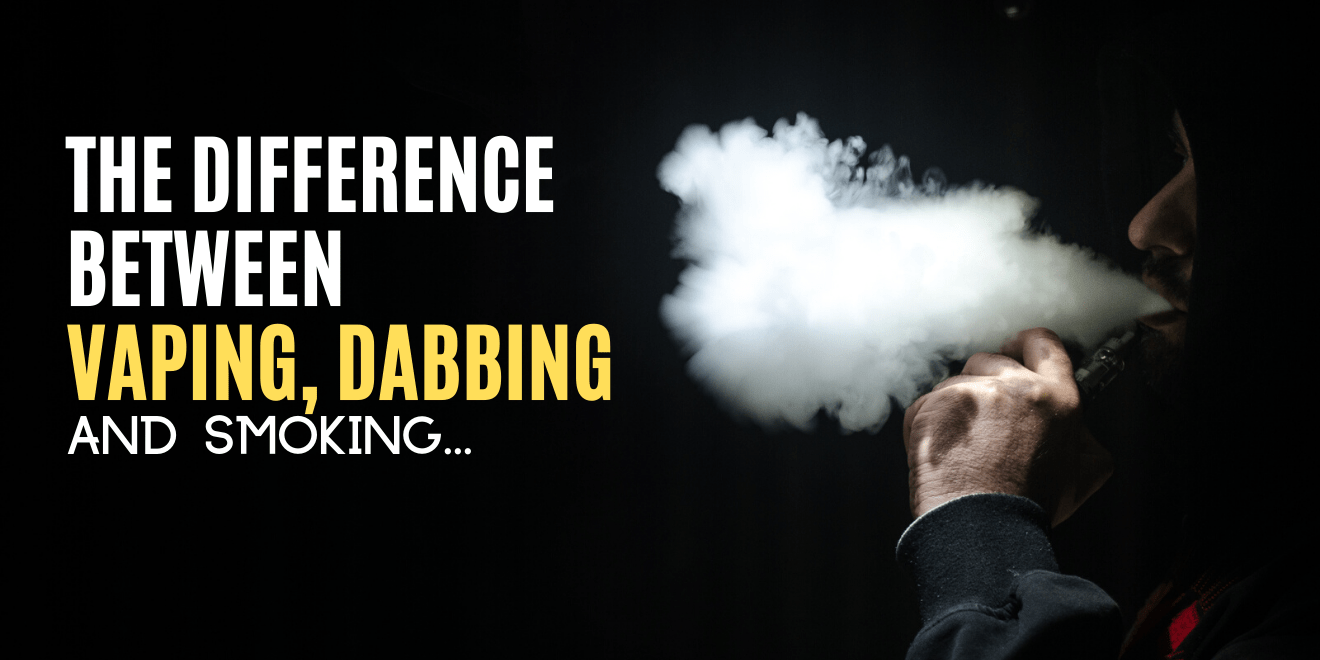
Before we get into discussing the differences, let’s start by understanding what each of these terms means.
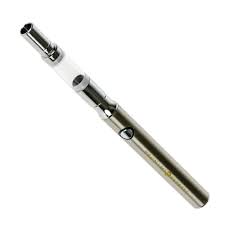 You essentially dab certain substances under this practice. But what exactly do you dab?
You essentially dab certain substances under this practice. But what exactly do you dab?
Good question.
A dab is basically cannabis crystal in a wax-like formation that has been pressed into a concentrated version. It has THC as well as other cannabinoids in high amounts. A typical dab kit looks much like a glass pipe. Some might even come with a ‘nectar collector,’ which is a straw-like unit that collects the dab as you inhale. Today you can also get an electronic dab setup at Big Daddy Smoke.
Vaping is the act of inhaling the vapors or aerosols. An electronic vaporizer or e-cigarette generates those vapors. You can vape practically anything from dry herbs, to concentrate, to vape juices, e-liquids, nicotine, and other substances.
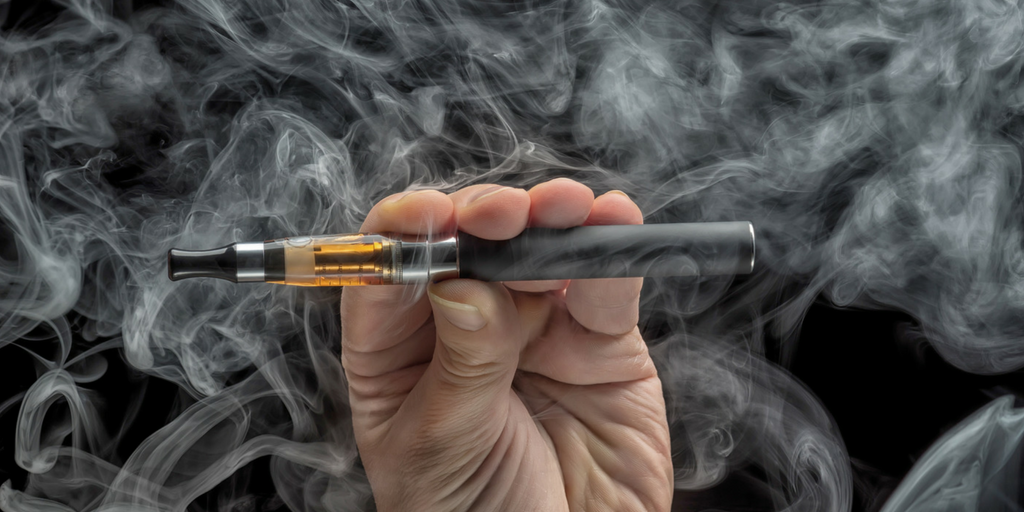
This one is self-explanatory. It’s the practice of using traditional cigarettes that typically contain tobacco among a battery of other chemicals. You light a cigarette on one end and smoke it through the other end called ‘the butt.’
This is an essential factor to analyze when putting vaping and dabbing against smoking. The initial cost of vaping is bigger as you have to buy the hardware and required equipment. From this viewpoint, it may seem like a more expensive option. But, in the larger scheme of things, it’s actually far more economical.
A pack of cigarettes containing 20 lights would easily cost you around $13 (more or less) in New York. Assuming an average smoker consumes 5 packs a week, the cost amounts to an average of $260 a month and over $3,000 a year. This is without the health-related cost and costlier insurance policies as a result.
A starter kit for both vaping and dabbing can start as low as $50. Once this phase is out of the way, one can expect to invest $15 every week on a bottle of e-juice (that is if you vape heavily). Overall, it amounts to $60/month or $720 a year.
It's clear from the calculations above that vaping and dabbing are far cheaper options than conventional smoking. What’s more, both these practices come with the opportunity to control the frequency of smoking and the amount of liquid you use.
[caption id="attachment_33536" align="aligncenter" width="509"]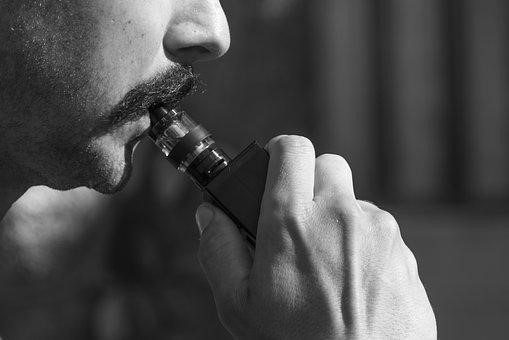 Image Source: Pixabay.com
[/caption]
Image Source: Pixabay.com
[/caption]
It’s common knowledge just how many health issues traditional cigarettes smoking has caused over the years. From mouth ulcers to more serious conditions like cancer and lung issues, the list is long. Several legislations came into effect to avoid the more severe risks from happening. Fires due to smoking are also a common sight.
In comparison with smoking, vaping and dabbing are supposed to pose much lower health concerns.
However, it’s not without a fair share of problems. E-cigarettes, in particular, are found to have problems with their batteries exploding. As you can guess, such explosions can cause significant safety issues. While the underlying issue behind batteries exploding is unclear, the use of sub-par batteries and overcharging are supposed to be the main factors behind explosions.
Smoking entails the combustion of tobacco. Tobacco contains thousands of harmful chemicals. More than 20 of those are cancer-causing or carcinogens. Some of the most harmful carcinogens as listed by cancer.org are:
The way vaping differs from traditional smoking is by eliminating the need to ‘combust’ anything, thereby eliminating the production of many harmful chemicals that we listed above. According to this report , there is a significant difference between the number of cancer-causing chemicals found in cigarette smoke vs. vapors. The same report also mentions that the FDA has touted e-cigs as ‘generally recognized as safe.’
Compared to cigarettes that contain over 20 chemicals, vapors contain only a handful of those:
Majority chemicals in e-cigarettes have much to do with the flavors. Most of those flavors are food-grade and safe for consumption.
This is an important aspect that contributes to a more enjoyable vaping session. Cigarettes, as we all know – do not come with temperature control.
Let it be known that smoking at high temperatures comes with a whole bunch of downsides, some of which are:
The smoke that is too hot can damage your lungs as it hits you directly.
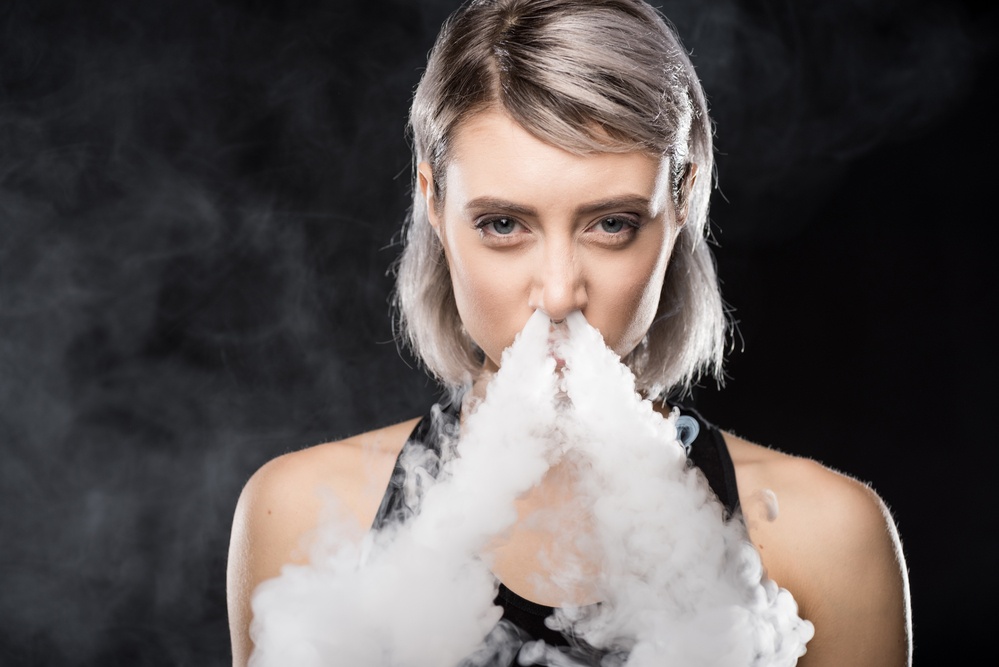
Smoking/vaping at an incredibly high temperature can destroy many of the essential flavonoids and terpenes that make it ‘flavorful.’
What’s more, the smoke also tends to taste burnt and just not right.
High temperatures can destroy much of the THC content. That means you are defeating the whole purpose of smoking/vaping if THC is getting destroyed in the process.
High temperatures cook the product too quickly. This is an inefficient practice as you are wasting more supplies than you would by vaping at low temperatures.
Smoking a cigarette is a rather linear process. You light it and you smoke. There is not much room for controlling the temperature.
It’s a lot easier to control the temperature when you are vaping. You can customize the heat settings as you per your liking. Also, you don’t have to keep the tip burning, as is the case with traditional cigarette smoking. Therefore, it tends to save the product and avoids unnecessary wastage.
You get a variety of vaporizers from big to small, conduction/convection heating, and even those with a battery-free setup. That means everyone can pick a vaporizer that best suits them. You don’t get that many choices with conventional smoking.
All and all, it’s rather clean, which option is more economical and safer for consumption. Other than batteries exploding ( which can be avoided by exercising caution ), vaping and dabbing seems to win across the boards on all fronts.
Eventually, the choice is all yours as to which option to stick with.
What is dabbing?
 You essentially dab certain substances under this practice. But what exactly do you dab?
You essentially dab certain substances under this practice. But what exactly do you dab?
Good question.
A dab is basically cannabis crystal in a wax-like formation that has been pressed into a concentrated version. It has THC as well as other cannabinoids in high amounts. A typical dab kit looks much like a glass pipe. Some might even come with a ‘nectar collector,’ which is a straw-like unit that collects the dab as you inhale. Today you can also get an electronic dab setup at Big Daddy Smoke.
What is vaping?
Vaping is the act of inhaling the vapors or aerosols. An electronic vaporizer or e-cigarette generates those vapors. You can vape practically anything from dry herbs, to concentrate, to vape juices, e-liquids, nicotine, and other substances.

What is Smoking?
This one is self-explanatory. It’s the practice of using traditional cigarettes that typically contain tobacco among a battery of other chemicals. You light a cigarette on one end and smoke it through the other end called ‘the butt.’
Cost Implications of Vaping/Dabbing vs. Smoking
This is an essential factor to analyze when putting vaping and dabbing against smoking. The initial cost of vaping is bigger as you have to buy the hardware and required equipment. From this viewpoint, it may seem like a more expensive option. But, in the larger scheme of things, it’s actually far more economical.
Smoking
A pack of cigarettes containing 20 lights would easily cost you around $13 (more or less) in New York. Assuming an average smoker consumes 5 packs a week, the cost amounts to an average of $260 a month and over $3,000 a year. This is without the health-related cost and costlier insurance policies as a result.
Vaping
A starter kit for both vaping and dabbing can start as low as $50. Once this phase is out of the way, one can expect to invest $15 every week on a bottle of e-juice (that is if you vape heavily). Overall, it amounts to $60/month or $720 a year.
It's clear from the calculations above that vaping and dabbing are far cheaper options than conventional smoking. What’s more, both these practices come with the opportunity to control the frequency of smoking and the amount of liquid you use.
[caption id="attachment_33536" align="aligncenter" width="509"]
 Image Source: Pixabay.com
[/caption]
Image Source: Pixabay.com
[/caption]Health and Safety Aspects
Smoking
It’s common knowledge just how many health issues traditional cigarettes smoking has caused over the years. From mouth ulcers to more serious conditions like cancer and lung issues, the list is long. Several legislations came into effect to avoid the more severe risks from happening. Fires due to smoking are also a common sight.
Vaping
In comparison with smoking, vaping and dabbing are supposed to pose much lower health concerns.
However, it’s not without a fair share of problems. E-cigarettes, in particular, are found to have problems with their batteries exploding. As you can guess, such explosions can cause significant safety issues. While the underlying issue behind batteries exploding is unclear, the use of sub-par batteries and overcharging are supposed to be the main factors behind explosions.
Chemical Composition
Smoking
Smoking entails the combustion of tobacco. Tobacco contains thousands of harmful chemicals. More than 20 of those are cancer-causing or carcinogens. Some of the most harmful carcinogens as listed by cancer.org are:
- Nicotine (this is what causes addiction to smoke and keeps people coming back for more)
- Formaldehyde
- Arsenic
- Hydrogen cyanide
- Ammonia
- Polycyclic aromatic hydrocarbons
- Carbon monoxide
- Benzene
- Nitrosamines
Chemicals involved in vaping/dabbing
The way vaping differs from traditional smoking is by eliminating the need to ‘combust’ anything, thereby eliminating the production of many harmful chemicals that we listed above. According to this report , there is a significant difference between the number of cancer-causing chemicals found in cigarette smoke vs. vapors. The same report also mentions that the FDA has touted e-cigs as ‘generally recognized as safe.’
Compared to cigarettes that contain over 20 chemicals, vapors contain only a handful of those:
- Nicotine
- Vegetable glycerin
- Propylene Glycol
- Nitrosamines
- Acetaldehyde
Majority chemicals in e-cigarettes have much to do with the flavors. Most of those flavors are food-grade and safe for consumption.
Temperature Control
This is an important aspect that contributes to a more enjoyable vaping session. Cigarettes, as we all know – do not come with temperature control.
Let it be known that smoking at high temperatures comes with a whole bunch of downsides, some of which are:
The smoke that is too hot can damage your lungs as it hits you directly.

Smoking/vaping at an incredibly high temperature can destroy many of the essential flavonoids and terpenes that make it ‘flavorful.’
What’s more, the smoke also tends to taste burnt and just not right.
High temperatures can destroy much of the THC content. That means you are defeating the whole purpose of smoking/vaping if THC is getting destroyed in the process.
High temperatures cook the product too quickly. This is an inefficient practice as you are wasting more supplies than you would by vaping at low temperatures.
Temperature control in smoking
Smoking a cigarette is a rather linear process. You light it and you smoke. There is not much room for controlling the temperature.
Temperature control in vaping/dabbing
It’s a lot easier to control the temperature when you are vaping. You can customize the heat settings as you per your liking. Also, you don’t have to keep the tip burning, as is the case with traditional cigarette smoking. Therefore, it tends to save the product and avoids unnecessary wastage.
You get a variety of vaporizers from big to small, conduction/convection heating, and even those with a battery-free setup. That means everyone can pick a vaporizer that best suits them. You don’t get that many choices with conventional smoking.
Bottom Line
All and all, it’s rather clean, which option is more economical and safer for consumption. Other than batteries exploding ( which can be avoided by exercising caution ), vaping and dabbing seems to win across the boards on all fronts.
Eventually, the choice is all yours as to which option to stick with.




































































































